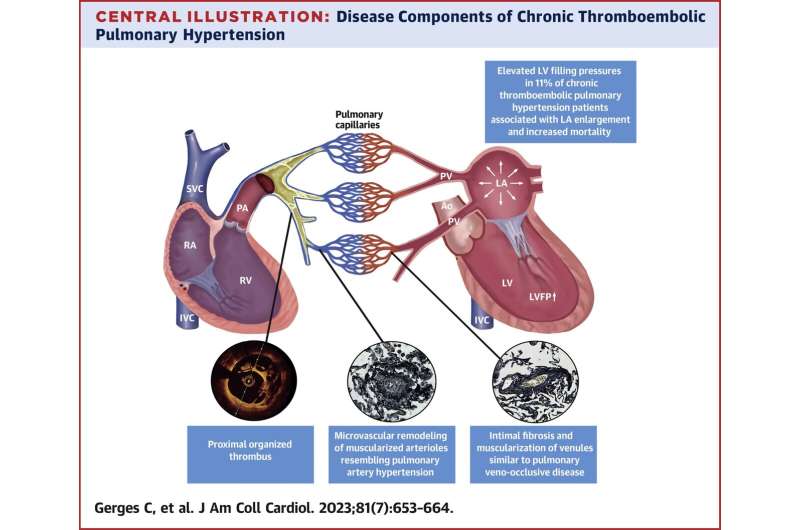voltaren schmerzgel in der ssw


A long-term analysis designed by Christian Gerges and Irene Lang at the Department of Medicine II of the University Hospital Vienna and MedUni Vienna indicates that one third of patients with chronic thromboembolic pulmonary hypertension (CTEPH) also have left heart disease. In the past, the possibility of overlap between these two conditions had not been considered in the diagnosis and treatment of CTEPH patients. The new findings were published in the Journal of the American College of Cardiology.
The long-term analysis is based on the systematic examination of 611 patients diagnosed between 1993 and 2019 at the Division of Cardiology at the Department of Medicine II together with the Department of Thoracic Surgery of the University Hospital Vienna and MedUni Vienna. For this purpose, precise haemodynamic measurements by means of right and left heart catheters were evaluated, carried out at the Division of Cardiology in the cardiac catheterisation laboratory.
The results show that left heart disease can occur simultaneously with chronic thromboembolic pulmonary hypertension. Previously, this overlap had not been considered in diagnosis and treatment.
“Until now, guidelines for the diagnosis of chronic thromboembolic pulmonary hypertension have required examination of the pulmonary circulation only. The possibility that CTEPH patients are also affected by left heart disease were not considered in the diagnostic process. The results of the long-term study now show that one third of CTEPH patients also have left heart disease,” says Irene Lang, head of the study and head of the outpatient ward for pulmonary vascular diseases, walgreens pharmacy in rockford il Division of Cardiology, of the MedUni Vienna and University Hospital Vienna.
As is the case with left heart disease, a filling disease of the left ventricle, the most important chamber of the heart from which blood is supplied to the organs, this specific form of pulmonary hypertension aggravates breathing. Clinically, the two diseases are difficult to distinguish from each other. Both conditions occur primarily during middle to older age.
“The results of the analysis provide evidence that the guidelines for CTEPH diagnosis should be expanded to include left heart catheterization, because CTEPH and left heart disease may coexist, which impacts prognosis,” says Lang.
The result of the analysis also bears out on drug treatment. Lang sees new challenges here, as drugs approved for pulmonary hypertension and CTEPH may be harmful in left heart disease. Building on the results of the long-term study, the task now is to work out the overlap between the two conditions in more detail and to find drugs that can treat both diseases.
Chronic thromboembolic pulmonary hypertension (CTEPH): A rare disease
Chronic thromboembolic pulmonary hypertension (CTEPH) is a specific form of pulmonary hypertension and a severe complication of acute pulmonary embolism easily overlooked. With a prevalence of 50 per million, CTEPH is a rare disease. While the diagnosis was still associated with a poor prognosis in the 1980s, the prognosis for CTEPH patients has improved considerably during recent decades due to new treatment options.
Today, in specialized pulmonary vascular disease centers such as the one at the University Hospital Vienna and MedUni Vienna, where multidisciplinary teams of cardiology, radiology, pulmonology and thoracic surgery work closely together and which is a member of the European Reference Network (ERN), patients have three independent treatment options at their disposal: targeted drug therapy, a surgical procedure and a percutaneous procedure.
More information:
Christian Gerges et al, Left Ventricular Filling Pressure in Chronic Thromboembolic Pulmonary Hypertension, Journal of the American College of Cardiology (2023). DOI: 10.1016/j.jacc.2022.11.049
Journal information:
Journal of the American College of Cardiology
Source: Read Full Article